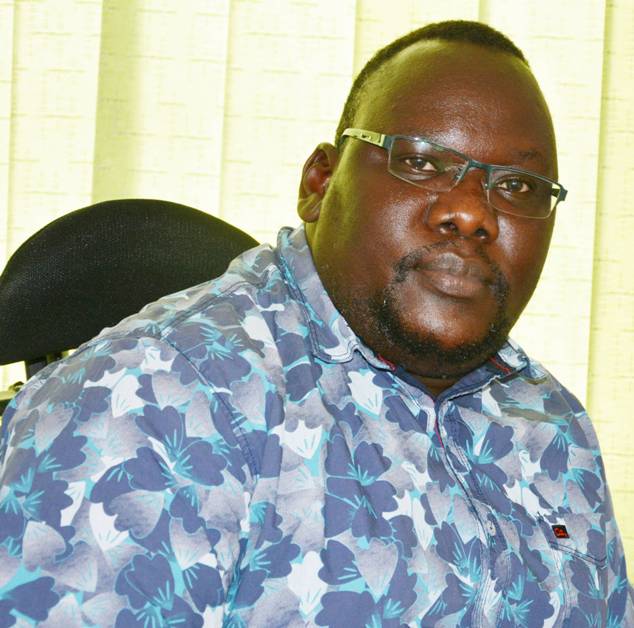Isimba Dam was commissioned with over 700 snags or defects. As the debate on load shedding continues, the likely disasters of operating a defective dam have been under-looked
The suspension of operations at Isimba Dam is raising questions about its safety amidst the glaring defects discovered before its commissioning in 2019.
While there are questions on whether there is a need to import electricity from Kenya, some suggest the bigger questions include whether Isimba Dam was insured. If it was insured, why should the government pay to repair the Dam after the floods if was really insured? What about the threats the Dam poses to nearby communities?
The cabinet reportedly approved a six-billion Shilling facility to import power from Kenya during the time when the dam will be under repair. Although Energy Minister Ruth Nankabirwa blames the shutdown at Isimba on operational challenges, there are reports that the flooding was due to a human error.
Dickens Kamugisha, the CEO of the African Centre For Energy Governance (AFIEGO) told our reporter that in other countries, such huge power Dams need insurance to cover likely disasters.
He expressed doubt about whether Isimba and Karuma Dams are under insurance coverage.
“In countries that are real, all those huge projects are insured but in our case, there are no guarantees even when the government is alleging that they are insured,” said Kamugisha.
Besides that, Kamugisha suggested that it is unlikely that any insurance firm will compensate for properties damaged at the section of the flooded Dam if it is discovered the problem was a result of human error. The biggest damage was near the submersion of the powerhouse.
“You have been hearing about the errors at that Isimba Dam at the time of commissioning. Can you have an insurance firm that takes on a project that has defects?” asked Kamugisha.
Dr Fred Muhumuza, an analyst and researcher wondered why the dam was commissioned with visible engineering defects.
About 775 snags were discovered in March 2019 when President Yoweri Kaguta Museveni commissioned Isimba Dam.
Most of those had not been fixed when the then newly appointed Energy Minister, Ruth Nankabirwa, and her deputy, Opolot Okasai visited the Dam in September last year.
The Dam had been closed for ten days in October 2020.
The contractor has repeatedly failed to rectify the defects despite several extensions of the Defects Liability Period as per the contract. The last extension was announced by State Minister for Energy, Sidronius Opolot Okasai on 25 May this year. The Defects Liability Period (DLP) ends in September 2022.
We have learnt that Isimba is under Contractor’s All Risk Insurance to cover risks like machinery breakdown and natural threats like flooding, and fires among others. But a source has indicated that compensation has not been effected due to observed mistakes by the contractor.
Our reporter could not reach the CEO of Uganda Electricity Generation Company (UEGCL), Engineer Harrison Mutikanga to confirm whether the dam was insured and what it is covered. But according to the 2019 UEGCL financial report, it had made prepayments of 11 billion Shillings of which, 5.7 billion was for insurance of the Isimba plant.
Sources have indicated to us that the 183 MW Isimba Hydropower station which was commissioned in March 2019 is indeed managed by Uganda Electricity Generation Company Limited UEGCL.
The source revealed that UEGCL is insured by SANLAM and Jubilee Insurance to cover the insurance of our vital assets and dams.
We could not independently confirm whether Isimba Dam which was insured through Clarkson Insurance Brokers Limited has ever been compensated.
A top official at Uganda Insurers Association who asked for anonymity told our reporter that answering the question would send him on what he described as slippery ground. “But I can tell you that it is an issue we have discussed over and over and it is not simple to answer. You need to put the same question to our regulators,” said the official.
Alhaj Kaddunabbi Ibrahim Lubega, the Chief Executive Officer of the Insurance Regulatory Authority of Uganda (IRA) whose body regulates the insurance sector told journalists that he had no information on whether the damages suffered have been compensated for.
“The agreement is between the underwriter and the client. Before you get that permission, you may not go into that detail whether companies have paid or not,” Lubega said.
IRA Manager in Charge of Regulation, Steven Kaddu Mukasa said it is the mandate of the Authority to ensure huge infrastructure under the Contractor’s All Risk Insurance.
“I must assure you that for all the projects that are being accrued on by government, we have advised all the agencies concerned and in most cases, these projects have taken on Contractors All Risk policies,” he said.
In 2018, Parliament’s Public Accounts Committee while considering the auditor General’s report on the contract agreement between the Ministry of Energy and Sino Hydro Group Limited found that the firm constructing Karuma Dam had defaulted on its Contractor’s All Risk insurance.
Sino Hydro Group Limited according to the committee was supposed to have a five-year policy whose premiums amounted to USD 11 million to hedge against damage to power plants, tunnels, and other facilities during the construction of the plant.
The MPS found that while work was on, the contractor had not paid the premiums yet they should have been paid within 60-days. A similar scenario was related to Isimba Dam.
“The lack of various insurance cover exposed the project to potential risks. There was manifest weakness in the supervision and management of the contract as evidenced by the failure to secure various insurance covers within 60 days,” observed the committee.
The Committee discovered that Sino Hydro had paid 50 per cent of the premium while China International Waters and Electric Corporation was in the process of paying 30 per cent. In such a scenario, some insurance experts have told URN that it was unlikely that the insurer would compensate the dams in case any of the risks under cover were to occur.
On why the government will have to seek for own money to repair damages even when under Contractor All Risk Insurance, Insurance Regulatory Authority’s Director Planning, Research, and Market Development, Sande Protazio said insurance doesn’t pay 100 per cent of the risk.
“In insurance when we say all risk, it does not mean that every risk is insured. So the policy will compensate up to the extent that the insurance covered that risk. What it means is that what is insured is what has been mentioned” he explained
He agreed with the Members of Parliament that the Karuma and Isimba contractors risked the projects by not fully paying up the premiums.
“Insurance operates on terms and conditions. One of the strictest terms is the payment of the premiums. So if you have paid 30 per cent, you don’t expect any circumstances that the insurer will compensate up to 100 per cent. That is not insurance depending on the terms and conditions,” he said.
Writing in the 2018 issue of UEGCL’s official newsletter (Genews), Wilberforce Manirkiza, a Civil Engineer in charge of Dam Safety, Isimba Dam was designed to release a maximum design flood of 4,500m3/s (4.5 million litres per second). He observed that when the Isimba reservoir is filled up for Operation, it will have a capacity of 170Mm3 (170 billion litres).
He warned that in the worst-case scenario if Isimba Dam breached, and all that quantity of water with a height of 15 meters (about a height of a 5-storeyed building) was released at the same time, it would violently sweep off most of the downstream communities thus leading to loss of lives.
“Property (including the nearby Mbulamuti Ferry) and business of the Owner (UEGCL) would come to a standstill, a loss worth millions of dollars to the government. This sounds scaring but dam failures that have happened elsewhere in the World have been an eye opener to these realities,” warned Manikirza.
-URN





